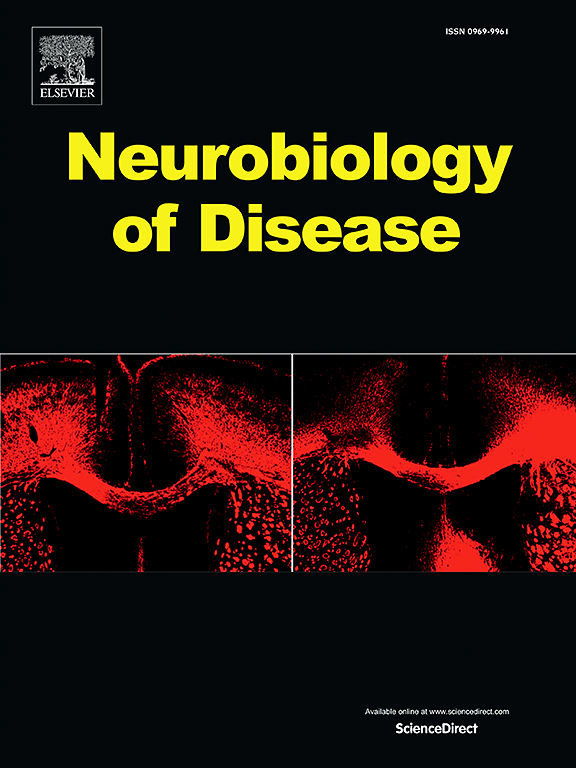Role of Tropomodulins in brain physiology and pathology
IF 5.6
2区 医学
Q1 NEUROSCIENCES
引用次数: 0
Abstract
Actin dynamics are crucial for the morphogenesis and function of neurons in the brain. Tropomodulins (Tmods) belong to a family of actin-binding proteins that cap the pointed-end of actin filaments. There are four Tmod isoforms, and three of which, Tmod1, Tmod2 and Tmod3, are expressed in the brain, with Tmod2 exhibiting neuronal specific expression. By regulating actin filament dynamics, Tmods participate in neurite outgrowth, dendritic spine formation, and synaptic morphology, thereby contributing to structural and functional neural plasticity. Dysregulation of Tmods has been demonstrated in several neurodegenerative and neuropsychiatric diseases, such as Alzheimer's disease, epilepsy, Down syndrome, and addictive behaviors. Currently, compared to cancer and cardiovascular diseases, the roles and mechanisms of altered Tmod expression in neurological diseases remain poorly understood. In this article, we provided an overview on the physiological roles and crucial functions of Tmods in the brain, summarized the recent advances in alterations of Tmods in neurodegenerative and neuropsychiatric diseases, and discussed their implications and potential contributions to disease pathology and treatment. This review may expedite future studies to delineate the roles and molecular mechanisms of Tmods in brain physiology and pathology, ultimately promoting the development of novel diagnostic and therapeutic strategies for related neurological diseases.
原调蛋白在脑生理和病理中的作用
肌动蛋白动力学对大脑神经元的形态发生和功能至关重要。Tropomodulins (Tmods)属于肌动蛋白结合蛋白家族,位于肌动蛋白丝的尖端。Tmod有四种亚型,其中Tmod1、Tmod2和Tmod3三种亚型在大脑中表达,其中Tmod2表现为神经元特异性表达。通过调节肌动蛋白丝动力学,Tmods参与神经突生长、树突棘形成和突触形态,从而促进神经结构和功能的可塑性。Tmods的失调已在几种神经退行性疾病和神经精神疾病中得到证实,如阿尔茨海默病、癫痫、唐氏综合症和成瘾行为。目前,与癌症和心血管疾病相比,Tmod表达改变在神经系统疾病中的作用和机制仍然知之甚少。本文综述了Tmods在大脑中的生理作用和重要功能,总结了Tmods在神经退行性疾病和神经精神疾病中的改变的最新进展,并讨论了其在疾病病理和治疗中的意义和潜在贡献。本文综述将有助于进一步研究Tmods在脑生理和病理中的作用和分子机制,最终促进相关神经系统疾病的新诊断和治疗策略的发展。
本文章由计算机程序翻译,如有差异,请以英文原文为准。
求助全文
约1分钟内获得全文
求助全文
来源期刊

Neurobiology of Disease
医学-神经科学
CiteScore
11.20
自引率
3.30%
发文量
270
审稿时长
76 days
期刊介绍:
Neurobiology of Disease is a major international journal at the interface between basic and clinical neuroscience. The journal provides a forum for the publication of top quality research papers on: molecular and cellular definitions of disease mechanisms, the neural systems and underpinning behavioral disorders, the genetics of inherited neurological and psychiatric diseases, nervous system aging, and findings relevant to the development of new therapies.
 求助内容:
求助内容: 应助结果提醒方式:
应助结果提醒方式:


